Skulls have been a part of human evolution for hundreds of thousands of years. They are the oldest relics from the past, and they provide us with valuable insights into the lives of our ancestors. Some skulls make great conversation pieces, while others have their own special story to tell about their origins.
Although there is still discussion about whether or not humans were the first and only species to walk on Earth, it’s pretty obvious that we are very old. The skeletons from the past hold evidence of our origins. Skulls are considered to be some of the oldest fossils in the world. This article will look at 12 of the oldest skulls in the world and examine their remarkable features.
12. Hofmeyr Skull
Age: 39,000 and 33,000 years old
Species: Homo Sapiens
Country of Origin: Hofmeyr, Republic of South Africa
Year Founded: 1952
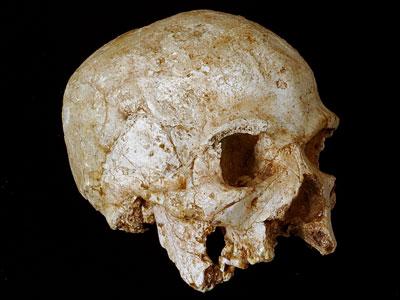
The genetic evidence that implies humans most likely originated in sub-Saharan Africa and migrated at about this time to colonize the Old World is supported by the discovery of a human skull filled with mud in an erosion channel by a dam construction worker near Hofmeyr, Eastern Cape, around 1954. This skull was only recently dated to 36 000 years ago.
The skull from Hofmeyr, South Africa, which has been dated to c. 36 ka is the only known example from this significant time in the late Pleistocene. The Hofmeyr skull lost a considerable portion of the occipital, the right mastoid process, the mandibular angle, and the lower facial skeleton, despite being mostly intact when it was discovered but damaged after recovery.
Did You Know?
The new information has filled in a fascinating piece of the jigsaw puzzle about the evolutionary beginnings of contemporary humans. The skull also demonstrates how closely Europeans and Africans resembled each other during that period.
11. Tam Pa Ling Remains
Age: 46,000–63,000 years old
Species: Homo Sapiens
Country of Origin: Laos
Year Founded: 2009 and 2010
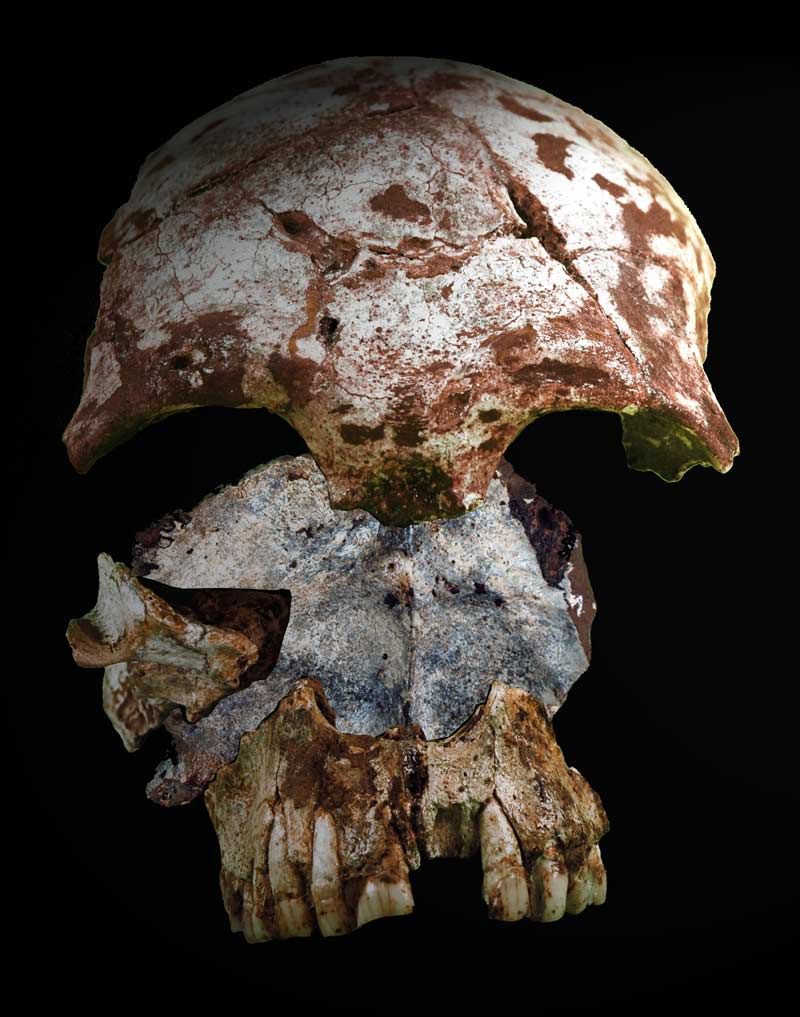
The oldest modern human remains discovered in Southeast Asia are pieces of a cranium discovered in Laos’ Tam Pa Ling cave in 2009. It was determined that the skull belonged to a contemporary person who had unmistakable Sub-Saharan African characteristics. Also discovered were two jawbone pieces that exhibit both archaic and contemporary human characteristics.
Three fossilized hominin remains—TPL1, an anatomically modern human skull; TPL2, a mandible with both modern and archaic features; and TPL3, a partial jaw with both modern and archaic features—have been found in the cave. The three fossils, which range in age from 70,000 to 46,000 years, represent three distinct people. The findings suggest that modern people may have moved to Southeast Asia around 60,000 years ago.
Did You Know?
It advances research toward determining when modern people first migrated from Africa to Asia by demonstrating that they had been there for at least 60,000 years.
10. Skuhl-Qafzeh Remains
Age: 80,000 – 120,000 years old
Species: Homo Sapiens
Country of Origin: Israel
Year Founded: 1932
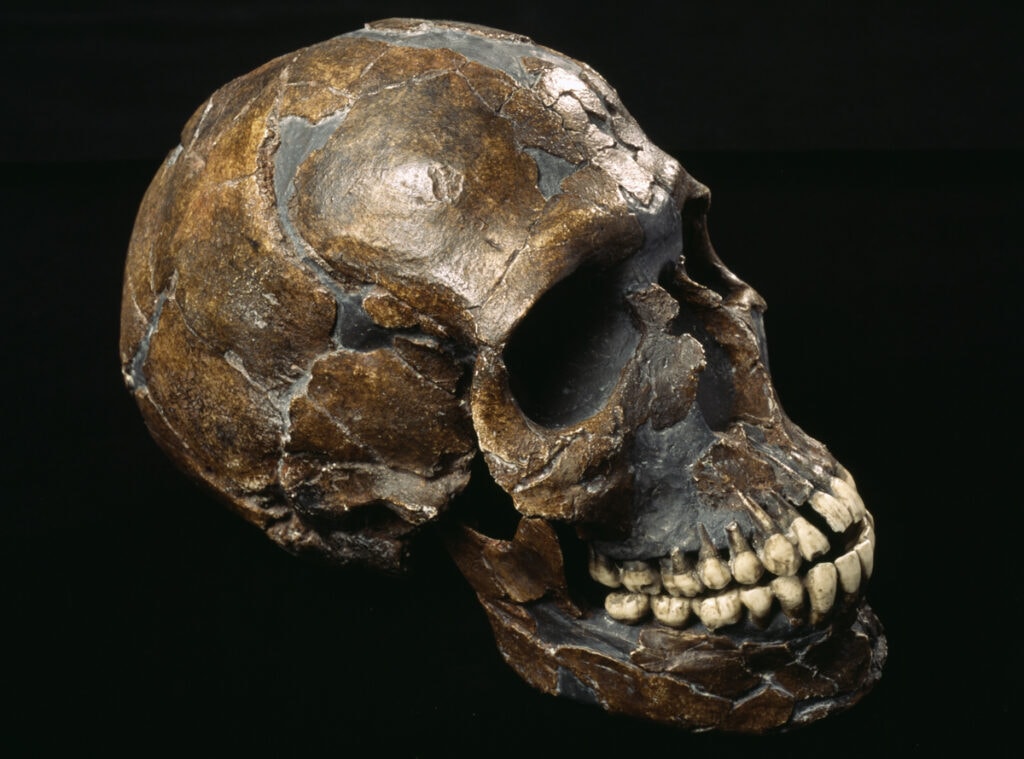
The remains of nine more adults and children, as well as Skuhl V, were found in the Skuhl Cave in Mount Carmel, Israel. However, Skuhl V also possesses the high, vertical forehead and rounded skull typical of contemporary human skulls. Skuhl V’s male skull includes several anatomical characteristics that are evocative of early humans, such as the brow ridges above the eyes. Skuhl V also lacks the protruding “bun” that is seen in many Neanderthal skulls towards the back of the skull.
Initially, it was believed that the bones discovered in Israel’s Qafzeh and Es Skhul caves between 1929 and 1935 belonged to a hominin species that served as the “missing link” between Neanderthals and modern humans. The Skuhl-Qafzeh people were thought to have descended from Neanderthals at first, whose bones were discovered in adjacent caves.
Did You Know?
Following the use of more accurate dating techniques, the scientists concluded that the Tabun Neanderthals could not have been the Near Eastern forebears of modern humans.
9. Dragon Man
Age: 146,000 years old
Species: Homo Longi
Country of Origin: China
Year Founded: 1933
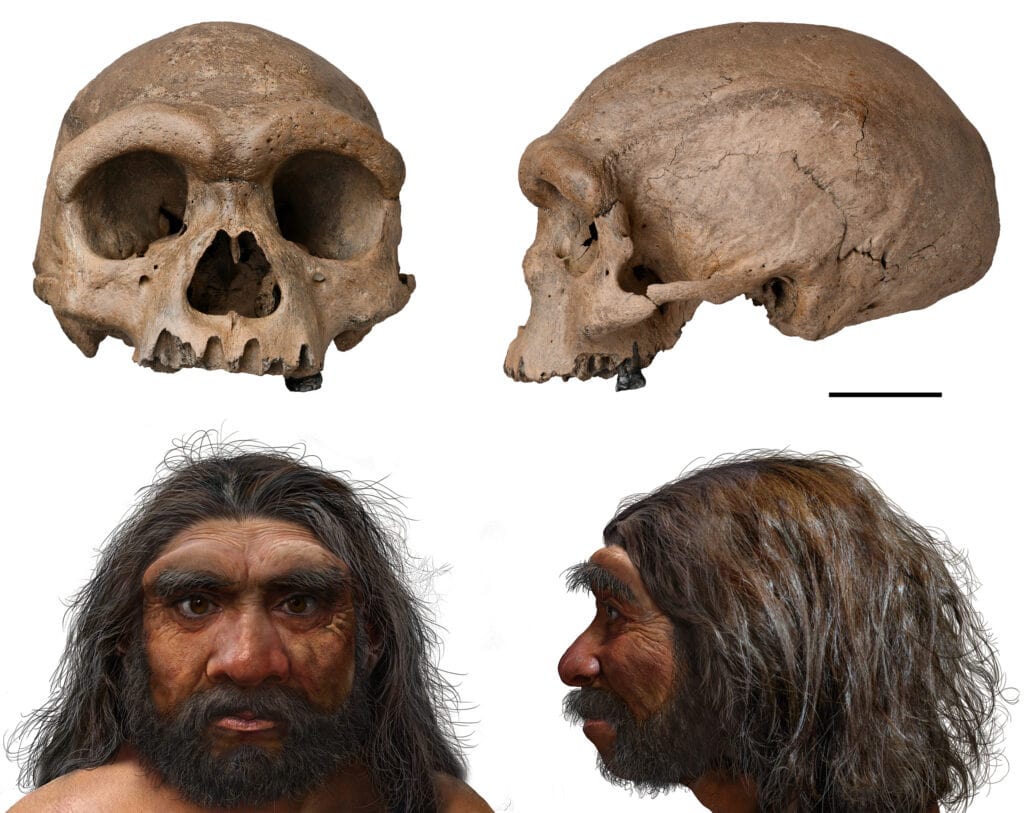
In the Heilongjiang region of northeastern China, close to Harbin City, a mystery fossilized skull was unearthed in 1933. Despite having huge teeth, prominent brow ridges, and square eye sockets, it was almost well preserved. However, no one could identify what it was; the skull is significantly larger than that of Homo sapiens and other human species, and the brain is about the same size as our own.
It is called Homo longi for the area in which it was discovered and translates to “dragon river.” Based in part on a chemical examination of sediments trapped inside the skull, which is believed to have belonged to a 50-year-old guy, it was identified. The fact that it originates from the higher portion of the Huangshan rock formation close to Harbin City confirms this.
Did You Know?
Uranium series dating, which establishes an object’s age using the known rate of decay of radioactive uranium atoms in a sample, estimates the age of the fossil to be at least 146,000 years old.
8. Herto Man
Age: about 160,000 years old
Species: Homo Sapiens
Country of Origin: Ethiopia
Year Founded: 1997
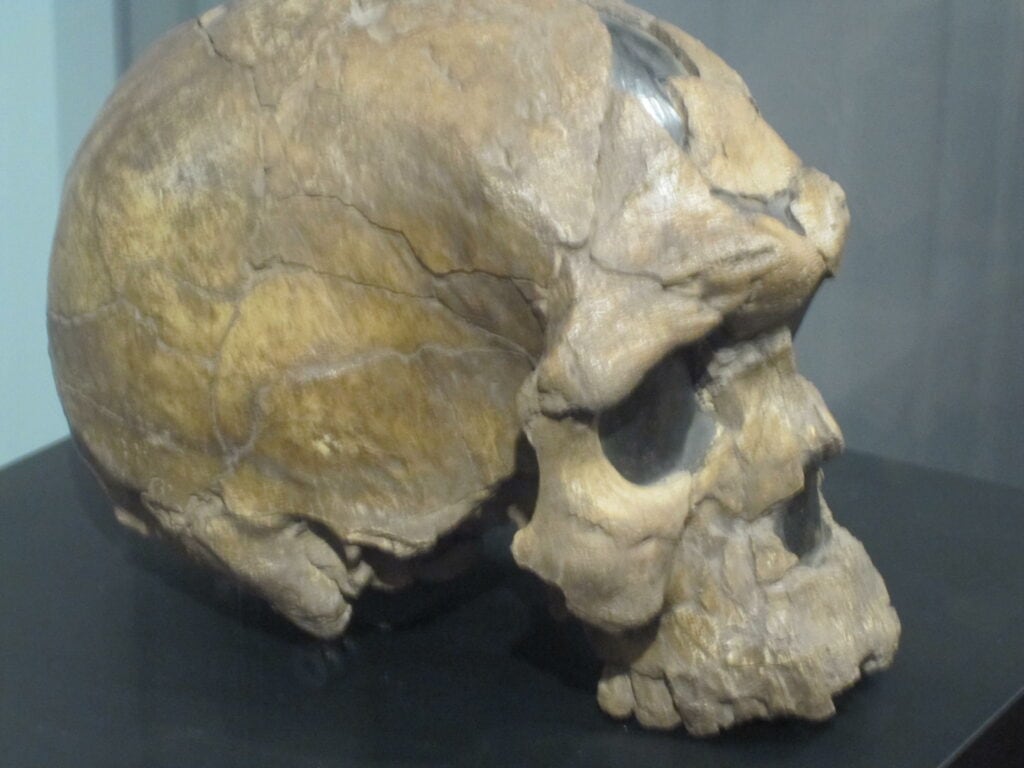
The Herto Man, which was found in 1997, is considered a human subspecies dubbed Homo sapiens idaltu. The Herto Man skulls were the earliest known human remains discovered, according to a 2003 paper that was published by researchers after six years of investigation. The skull, which is thought to be around 160,000 years old, supported the conventional wisdom that modern humans originated in Africa.
Since the remains display the human species’ distinctive globular braincase form and facial traits, scientists predict the discoveries are complete enough to be classified as early modern humans. The mature skulls, however, are both enormous and strong, and they also resemble more ape-like fossils.
Did You Know?
Approximately 160,000 years ago, in Pleistocene Africa, a subspecies of Homo sapiens called Homo sapiens idaltu, whose name means “first born,” went extinct.
7. Omo Remains
Age: 195,000 years old
Species: Homo Sapiens
Country of Origin: Ethiopia
Year Founded: 1967
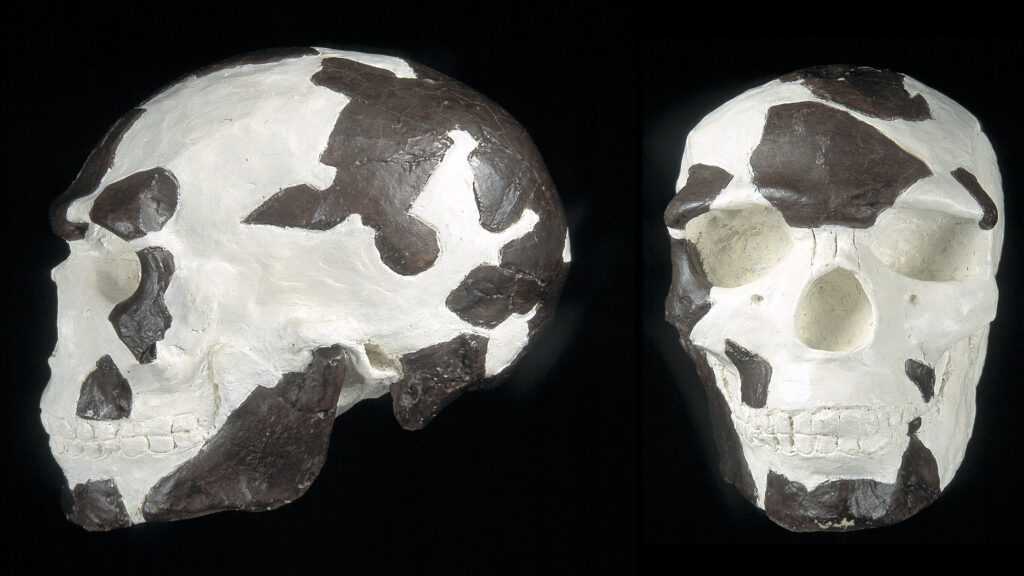
About 200 teeth, four jaws, a partial skeleton, fragments from two skulls, and a leg bone make up the fossilized remains of hominins, human ancestors found there between 1967 and 1974. At various levels, remains from a wide and significant time span in human evolution have been revealed.
The oldest known specimens of Homo sapiens were thought to have been discovered near Omo Kibish in Ethiopia. Most scientists held this view because of the Omo Kibish skull caps, which were thought to have come from East Africa during the early modern human era. The skull caps provide a more comprehensive picture of early human history, even though they are no longer the oldest relics.
Did You Know?
In Omo, a region in southwest Ethiopia along the Omo River that was named a UNESCO World Heritage site in 1980, paleoanthropological excavations have been carried out.
6. Apidima 1
Age: about 210,000 years old
Species: Homo Sapiens
Country of Origin: Greece
Year Founded: 2019
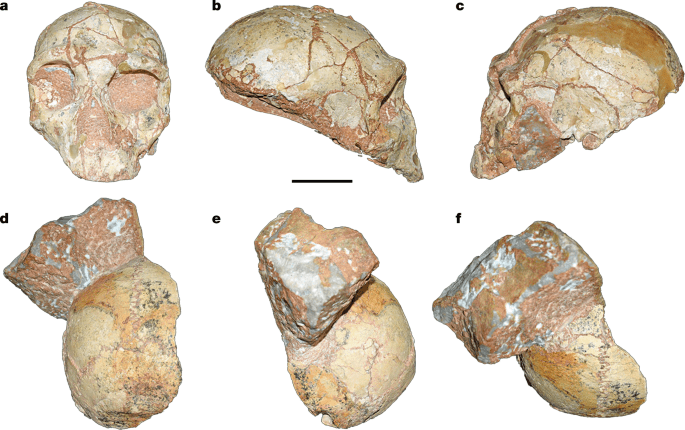
2018 saw the partial contemporary H. sapiens jaw in Israel. It was known as Misliya-1 and is likely to be up to 194,000 years old, showing that the human species left Africa far earlier than previously believed.
The Greek half-skull known as Apidima 1 was discovered more than 40 years ago but has never undergone a thorough examination. One reason for this is that Apidima 2, a Neanderthal skull, was found nearby and is another, more complete hominid skull.
Did You Know?
Due to its proximity to Apidima 2, Apidima 1 was also thought to be Neanderthal.
5. Dali Man
Age: disputed – between 209,000 – 260,000 years old
Species: Homo Erectus
Country of Origin: China
Year Founded: 1978
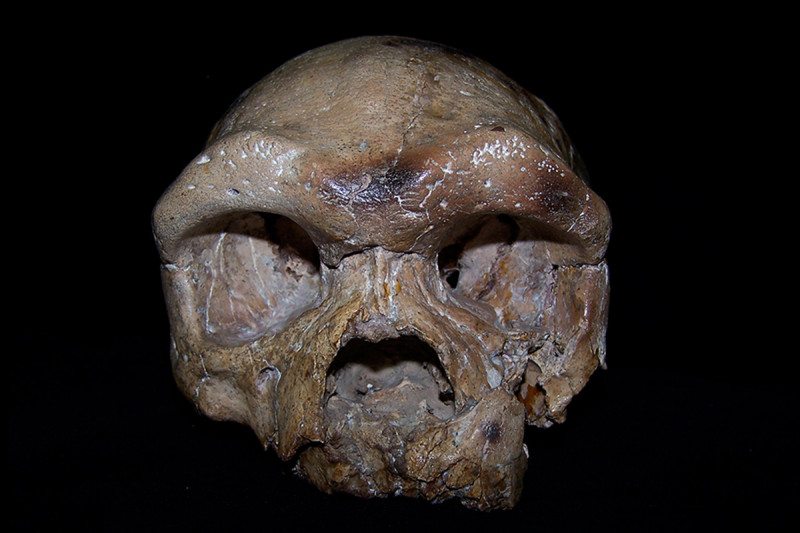
Long-held theories about the origin and spread of Homo sapiens have been called into question by research on the Dali Man, a skull from China. The Dali Man’s head resembles the oldest African human bones, despite the consensus among experts that all modern humans are descended from Africans.
In 1978, when the skull was originally found, experts first thought it belonged to the Homo erectus species of hominins. The notion that Homo erectus and Homo sapiens had interbred genetic material persisted for a very long time after the Dali Man was found.
Did You Know?
A more recent analysis shows that the Dali skull and two Homo sapiens skulls found in Morocco have strong similarities.
4. Jebel Irhoud Skulls
Age: over 300,000 years old
Species: Homo Sapiens
Country of Origin: Morocco
Year Founded: 1960
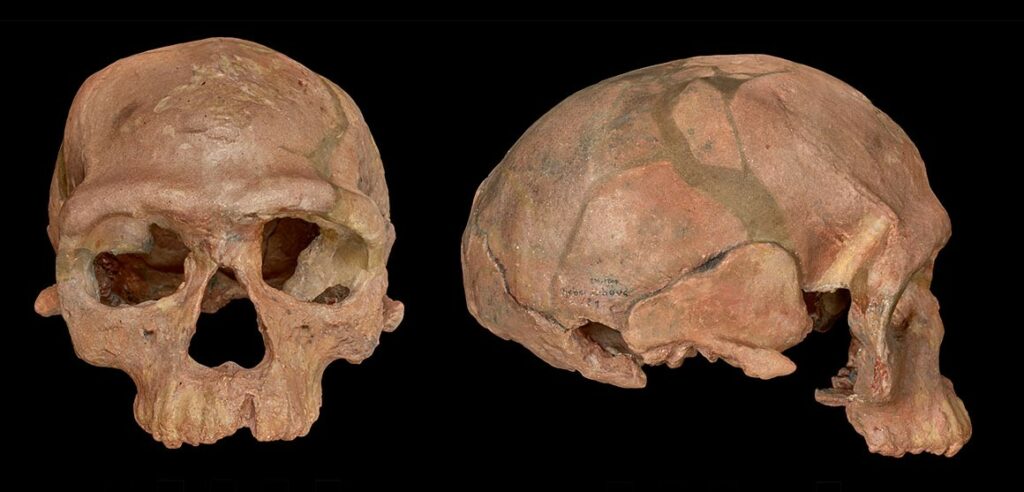
The skulls found at the Jebel Irhoud archaeological site in Morocco are thought to be among the earliest human remains ever found. A miner found the first skull in 1960, and as a memento, he gave it to an engineer. After some time, the engineer gave the skull to the University of Rabat, and in 1961, a formal expedition was organized to the site.
There have now been several discoveries of other bones, including heads. It was widely believed that the skulls belonged to Neanderthals, but now researchers have found that they really come from an early variety of Homo sapiens. According to estimates, the skulls are more than 300,000 years old.
Did You Know?
Researchers now think that between 330,000 and 300,000 years ago, modern people were dispersed across the continent.
3. Dmanisi Skull 5
Age: 1.77 million to 1.85 million years old
Species: Homo Erectus
Country of Origin: Georgia
Year Founded: 2005
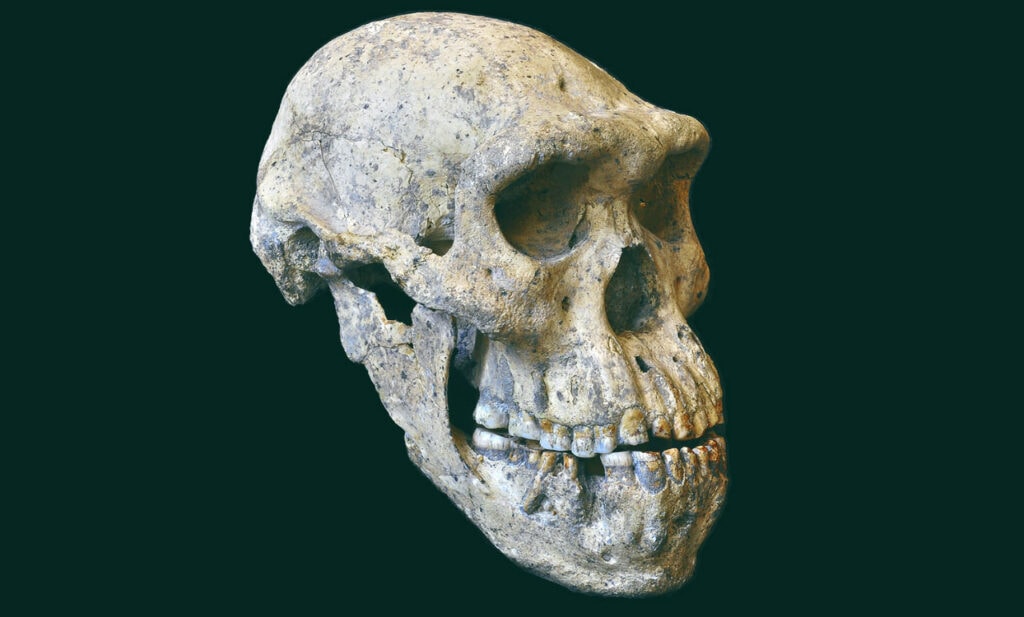
It has been shown that Homo erectus lived outside of Africa about 1.7 million years ago during the Plio-Pleistocene epoch thanks to amazing fossil discoveries made at the Dmanisi site in the Georgian nation. This discovery adds to the growing body of evidence supporting this theory. This specimen—one of five discovered in the same location—offers a remarkable window into early human development, within-group diversity, and hominin migratory patterns.
The most complete skull discovered at the Dmanisi site, Dmanisi D4500 or D2600, is presumed to belong to an adult male Homo erectus. Big flared zygomatic arches, which imply huge chewing reflexes, a massive prognathic face with a prominent eyebrow crest, huge molars, and an internal cranial volume of 546 cc are among the skull traits present in this individual, which broadens the range of variance in the Dmanisi sample.
Did You Know?
The adult Homo face’s orientation and position in relation to the size of the braincase are demonstrated by this early Homo specimen.
2. MRD Skull
Age: 3.8 million years old
Species: Australopithecus Anamensis
Country of Origin: Ethiopia
Year Founded: 2019
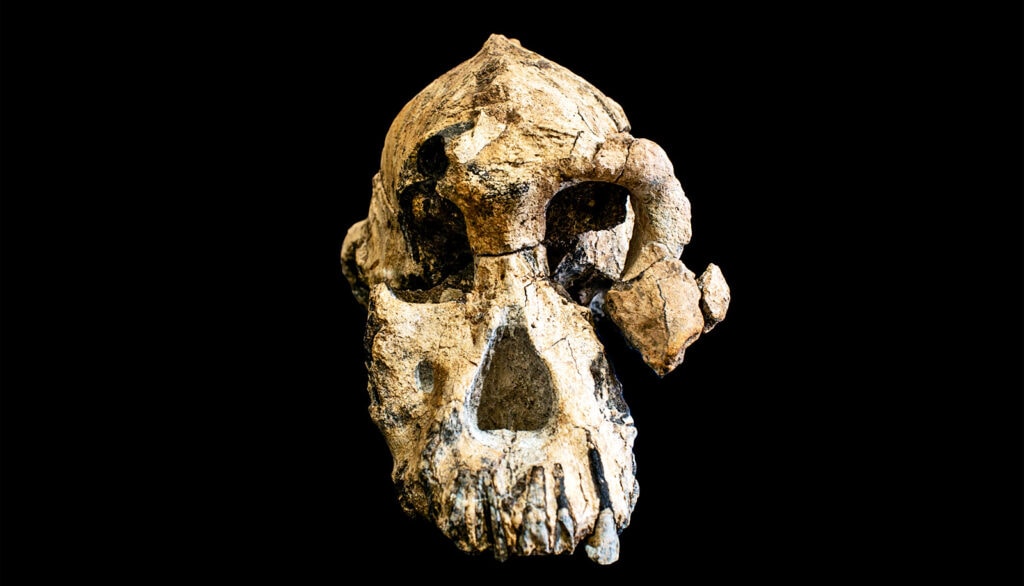
The earliest australopiths, the ancestors of the modern species Homo, emerged about 4.2 million years ago. They were upright, and their brains were only slightly larger than a chimpanzee’s. The best-known fossilized hominid, Lucy, dating back 3.2 million years, was an Australopithecus afarensis, a later species in the genus.
According to the prevailing sentiment, A. The australopith species Afarensis diverged and spread across much of Africa. Numerous scientists thought that the earliest Australopith, Aanamensis, was the ancestor of Afarensis, which itself emerged around 3.9 million years ago.
Did You Know?
Paleoanthropologists have found fragments of this extinct species’ remains in several places around East Africa, but they were unable to identify it.
1. Toumai
Age: up to 7 million years old
Species: Sahelanthropus Tchadensis
Country of Origin: Chad, Central Africa
Year Founded: 2002
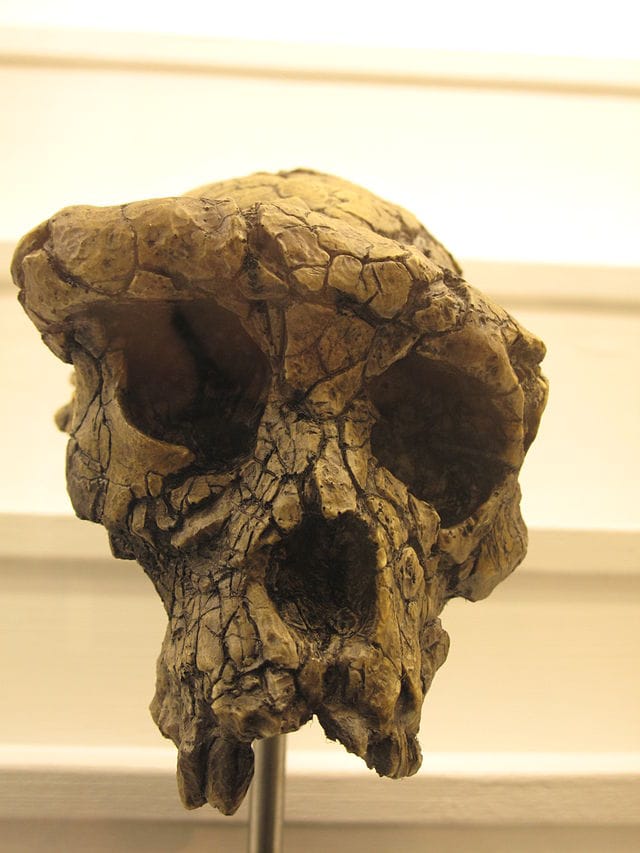
The Toumai skull, along with other collections of bones, was uncovered in the Northern Chadian desert in 2001 and is considered the oldest skull ever found in the world. Toumai, which in the local language means “hope of life,” is the name given by researchers to the skull. Its traits were a mix of the old and the new, with a brain the size of a chimpanzee but small canine teeth, which are more common in hominins than chimpanzees, our closest living relatives.
The age of Touma is roughly six to seven million years old; the last common ancestor between humans and chimpanzees, according to paleoanthropologists at the time, was at least a million years younger. Touma suggested that our lineages split up earlier than previously thought, and he had one particular trait that many paleoanthropologists took to mean that Touma was the first human.
Did You Know?
The earliest hominid, Touma, was one of humankind. The spinal cord emerges from the foramen magnum, an aperture at the base of the skull.











